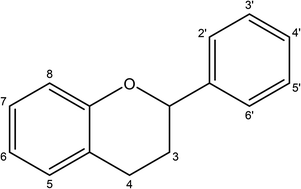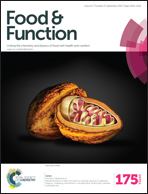Comparison of flavonoid intake assessment methods†
Abstract
Background: Flavonoids are a diverse group of polyphenolic compounds found in high concentrations in many plant foods and beverages. High flavonoid intake has been associated with reduced risk of chronic disease. To date, population based studies have used the United States Department of Agriculture (USDA) food content database to determine habitual flavonoid intake. More recently, a new flavonoid food content database, Phenol-Explorer (PE), has been developed. However, the level of agreement between the two databases is yet to be explored. Aim: To compare the methods used to create each database, and to explore the level of agreement between the flavonoid intake estimates derived from USDA and PE data. Design: The study population included 1063 randomly selected women aged over 75 years. Two separate intake estimates were determined using food composition data from the USDA and the PE databases. Results: There were many similarities in methods used to create each database; however, there are several methodological differences that manifest themselves in differences in flavonoid intake estimates between the 2 databases. Despite differences in net estimates, there was a strong level of agreement between total-flavonoid, flavanol, flavanone and anthocyanidin intake estimates derived from each database. Intake estimates for flavanol monomers showed greater agreement than flavanol polymers. The level of agreement between the two databases was the weakest for the flavonol and flavone intake estimates. Conclusion: In this population, the application of USDA and PE source data yielded highly correlated intake estimates for total-flavonoids, flavanols, flavanones and anthocyanidins. For these sub-classes, the USDA and PE databases may be used interchangeably in epidemiological investigations. There was poorer correlation between intake estimates for flavonols and flavones due to differences in USDA and PE methodologies. Individual flavonoid compound groups that comprise flavonoid sub-classes had varying levels of agreement. As such, when determining the appropriate database to calculate flavonoid intake variables, it is important to consider methodologies underpinning database creation and which foods are important contributors to dietary intake in the population of interest.



 Please wait while we load your content...
Please wait while we load your content...